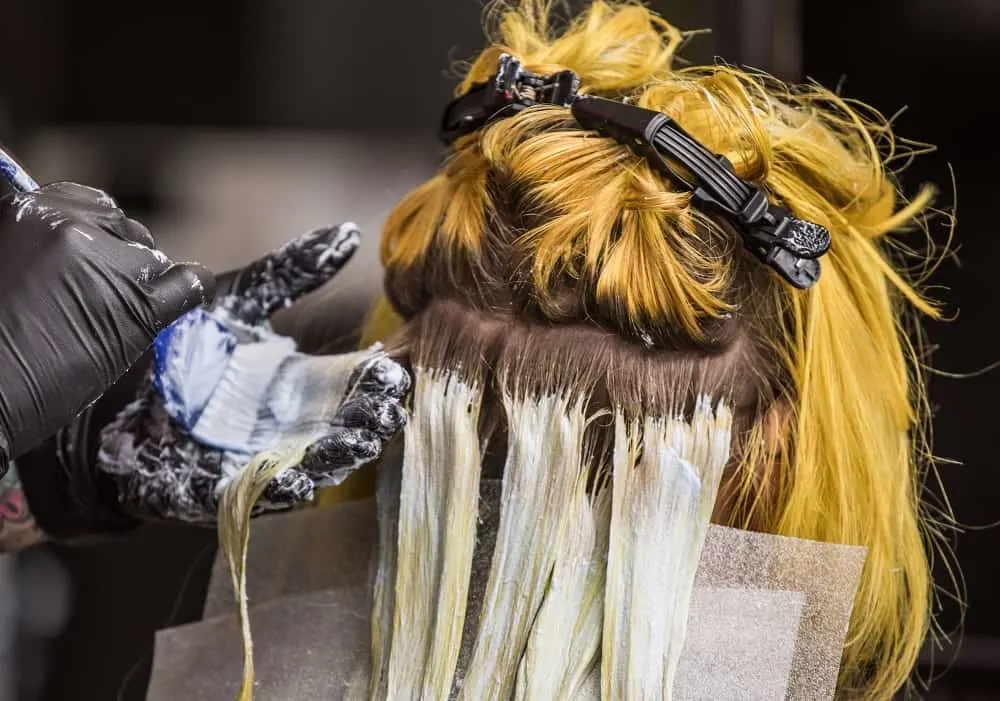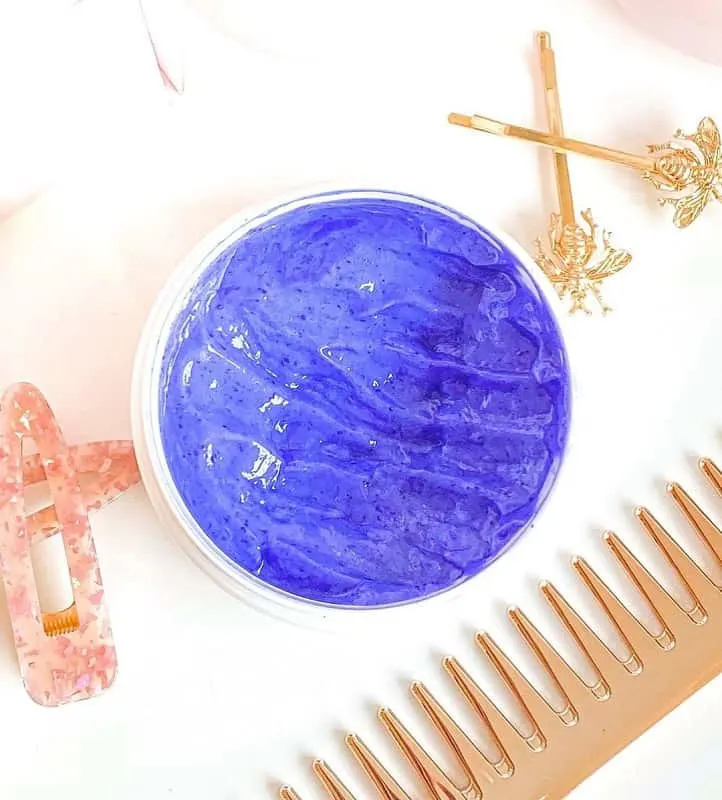Yellow tones are the mortal enemy of bleached hair. Bleaching can open many doors for unique, fun hairstyles and personal expression. However, doing it at home can be risky and can have all kinds of adverse effects.
Damage, dryness, hair loss, and unexpected colors can result from improperly bleaching your hair. Even if you don’t damage it, if your bleached hair turned yellow, then all your hard work seems to be for nothing.
Thankfully, there are plenty of ways that you can combat that unflattering brassy color and get back to the lighter, brighter hair you dreamed of previously.
How to Fix Hair That Turned Yellow After Bleaching
Yellow tones result from an imbalance between the warm and cool tones of your hair. Brassy colors mean that warm tones are winning out, and you need to neutralize and balance them to bring a more dimensional color.
If you need to know how to fix bleached hair that turned yellow, here are the four easiest ways to get you to your ideal color.
#1. Add More Bleach

I know what you’re thinking! Add more of the thing that caused the problem in the first place? No, thank you!
But if you are trying to achieve a light blonde tone, then your brassiness and hair that turned yellow after bleaching may be due to not bleaching enough. When you want light, cool blonde tones, you have to extensively remove the natural pigment from your hair.
If your natural color has warm undertones, a brassy color could signify that you haven’t removed enough of your natural pigment to allow a lighter, cooler blonde to shine through.
Of course, as mentioned before, this is only the case when achieving a blonde color. If you’re bleaching your hair to add a different bright, fun color, this won’t help you very much.
But if blonde is what you’re going for, then simply pick up some more bleach and developer and try the process again. You’ll want to monitor the process carefully to ensure you aren’t damaging your hair, and if you need multiple sessions, then space them out over several days or weeks.
#2. Try a Toner

Toner is another excellent way to color-correct your hair. It’s more gentle than bleach and can provide that last bit of push needed to even out the tones in your hair.
Toner provides a semi-permanent, somewhat sheer wash of color that brings shine and gloss to your overall final color. It’s a great option to pursue if your color needs adjusting slightly.
Because toner is semi-permanent, the effects will be temporary and will wash out over time. While it is more gentle than bleaching, toning is still a chemical process that could affect your hair, depending on how healthy it is. It’s only recommended for every 8 weeks or so. You could go as little as every four weeks if you’re familiar with your hair and what it can handle, but make sure to monitor the health of your hair.
Since toner neutralizes unwanted tints in your hair, it’s crucial to choose a color that complements the shade you’re trying to tone out of your hair. Therefore, if your hair is too brassy with yellow tones, you’ll need a purple toner.
If your tones lean toward the orange side, then violet or blue toner could work wonders, too.
#3. Try a Purple Mask
Pigmented haircare products are also great at subtly toning hair that needs slight adjustments. If your hair turned yellow after bleaching, then it may be a good time to invest in a nourishing, purple-pigmented hair mask.
Pigmented products are like less intense toners that you can use more often, up to twice a week if needed. They provide a semi-permanent deposit of neutralizing dyes that balance out too-warm hair color to leave you with a more flattering shade.
However, it’s still important not to over-use pigmented products. Over-use of pigmented products can lead to hair staining. Even though your blonde hair won’t be yellow anymore, it might end up purple, which is probably not the look you want, either.
To be safe, use these pigmented products only as needed. If your hair is yellow after bleaching, try a nourishing pigmented mask that can infuse your hair with hydration and repairing ingredients while also depositing neutralizing pigments to take care of the brassiness.
You should notice a change within one use. After that, you can sit the product back on your shower or bathroom shelf and wait to use it again when the brassiness starts to peek back through.
#4. Use a Vinegar Rinse

More natural options may be best for hair that’s been through the wringer and is dry and damaged. There are plenty of great DIY recipes for at-home, natural toners. Diluted apple cider vinegar is one of the best.
The acidity of this natural product and others like it help restore the pH of bleached hair, which can help it hold onto all tones longer, reducing the need to neutralize overpowering warm tones.
As with anything else, don’t use it too much, or you might impact your hair’s pH negatively. Always follow up these natural recipes with a good, nourishing, and hydrating deep condition.
Final Thoughts
Even if your bleaching process didn’t turn out exactly how you expected, you can still make the most of your efforts and often salvage the color.
Whether you go for a toner, pigmented products, or natural pH balancers, you still have plenty of options to maintain flattering hair color. Additionally, you can also lighten your hair further with more bleach or darken it with a different color altogether.
The tone of your hair is in your hands: try one of these yellow-busting methods to restore your confidence and salvage your dye job quickly and easily.
Interesting Topics for You:
- How to Fix Hair That Turned Green After Dying Brown
- How to Fix Hair That Turned Pink After Toning
- Can I Use Purple Over Bleached Yellow Hair?
- How to Fix Hair Color That’s Too Red
- Red Hair Turned Orange: Easy Fix

